Corner wardrobe: types and characteristics

Corner cabinets are popular in various interior styles. Such products are chosen for different rooms and can perform many functions. Furniture stores offer a huge number of corner models, so it is important to familiarize yourself in advance with all the characteristics and rules for choosing such cabinets.


Features, pros and cons
The corner wardrobe has unique characteristics, among which there are descriptions of both positive and negative qualities. The pluses of corner structures include:
- Spaciousness... Cabinets can have many sections, which are convenient for storing a large number of items. Even in compact corner designs, everything you need for a home or office will fit perfectly.

- Such wardrobes have graceful and beautiful shapes.... Their silhouette gives elegance to the entire interior of the room, hides imperfections and disguises planning errors.
- Convenient device and the shape of the corner cabinet allows you to create a whole dressing room in the room. The product will be convenient not only for storing clothes, but also for creating a private area for changing clothes.


- This type of chiffonier is used in various rooms.... It is installed in almost all types of premises - bedrooms, children's rooms, corridors, offices. Depending on the purpose of the room, a suitable product design is easily selected.
- Lots of decor options... You can create exclusive models of corner cabinets according to your own project or use the ideas of designers. A wide range of shapes and materials are used for decoration.



Despite a lot of advantages, corner products have some disadvantages:
- The corner wardrobe is not suitable for all types of layouts. It will not look at all in a narrow room or corridor. The most preferred shape of the room is square or rectangular.
- Not all models of this type can create a variety of compartments. Small structures do not hold many shelves for various things, they are mainly intended for placing outerwear or clothes on hangers.
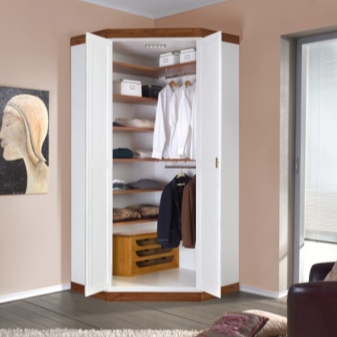

Models and varieties
Among the corner wardrobes, you can find a variety of models for every taste and wallet. There are the following types of classifications.
By the number of doors:
- Single leaf the wardrobe is a five-walled product with one swing door. It is used in small spaces and has a discreet design. A single-door wardrobe is often equipped with a mirror that covers the entire area of the door.
- Bivalve the cabinet can also be pentagonal or trapezoidal. A two-leaf wardrobe is not only available with swing doors, but also with sliding doors. Often, a two-door wardrobe forms a corner with open front shelves attached to it from the side.


- Tricuspid corner products have a concave shape. Two compartments are on the sides and one is in the middle. The middle compartment is used for storing textiles and large items. Corner units with three doors are often fitted with a mirror. Sometimes a three-door wardrobe is L-shaped.


According to the design features, the following types are distinguished:
- Cabinet cabinet is a one-piece construction that does not reach the ceiling level. The closed facade of the main part of the cabinet, which includes compartments with a bar, is complemented by open shelves.
A design with a corner element is often chosen, which can be a drawing, mirror and other decor. Models with legs will become a special type of cabinet models.

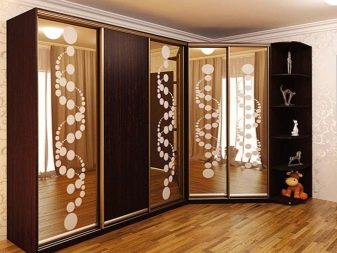
- Wardrobe closet or a wardrobe is very popular for storing clothes. It has a radius or five-walled shape, it can include structures with two rods, special linen boxes and even special compartments for storing household appliances and shoes.


- Shelving cabinet - a great place for books, small items and accessories. It is a symmetrical or L-shaped structure consisting of horizontal shelves. The open facade of the product allows you to design the interior in an original way.
- Wardrobe can be in the form of a strict L-shaped design or wardrobe. In the first type, there are many sections for different clothes. A wardrobe can also have a varied number of compartments, but in most cases they are small.


- Modular corner wardrobe has many different components and options for their combinations. In addition to the section for things, it can include bookshelves, dressers, bedside tables and even tables.

- Built-in wardrobe is a diagonal or radial sliding doors from floor to ceiling, which separate part of the space in the corner of the room under the wardrobe. Typically, this design is a two-piece wardrobe.
- Folding cabinet used in a kitchen set. This compartment is very functional - when you open the door does not take up much space, and the corner section of the headset itself is quite spacious for kitchen utensils. Most often, the lower compartment of the headset has such a design.
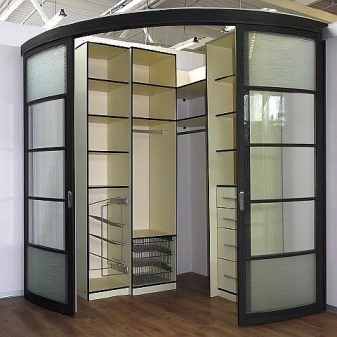

According to the location:
- Most corner pieces sit on the floor. Large cabinets stand on the floor with their entire surface or have graceful legs at the base. If we consider a kitchen floor model, then it is worth noting the presence of a rotating mechanism for storing and drying dishes.


- Wall-mounted cabinets are installed in the corner of the kitchen or bathroom. The wall cabinet can have a rotating mechanism, with the help of which it is convenient to take out kitchen utensils and dishes. In the bathroom, a shallow hanging cabinet is usually hung on the wall, because the room itself is oversized.


By configuration:
- The cabinet "slide", popular for living rooms, has a difference in the height of its elements. Sometimes the left and right compartments are the same size and configuration, and sometimes the corner cabinet contains versatile compartments that differ in height and shape.
- Asymmetric type of products are convex-concave structures, which most often require a large area for installation. It is better to install an asymmetrical wardrobe in a room without layout flaws.


- Convex products have semicircular sliding doors.
- The radial version allows not only convex, but also concave door shapes. Sometimes both of these elements are found in curved cabinets.
- The straight design has a clear 90 degree angle at the corner joint. Such cabinets give the interior austerity and laconicism.


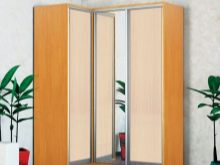
Configuration options
Corner cabinets can include a number of compartments that are useful and convenient for storing frequently used items. Corner designs combine several pieces of furniture, saving space in the room. The most popular trim levels include:
- Ergonomic combination of a corner design with a desk. One side of the open-fronted corner wardrobe passes into a corner table, which will become a comfortable piece of furniture in a student's room. The wardrobe contains a compartment with shelves for storing books, sometimes the product is a more massive structure with drawers and sections for clothes. The table is enclosed in the corner of the product between its sides.


- A continuation of one of the sides of the corner wardrobe can be a chest of drawers, which is part of a modular system and completely matches the style and color of the wardrobe.A large chest of drawers fits into the bedroom. For a corridor, a combination of a wardrobe with a more compact chest of drawers is suitable.
- For kitchen structures, the design of the model with a pull-out section is popular. The door mechanism opens as standard, while the shelves themselves slide out in an arched path. Often these cabinets are equipped with a dish drainer.


- One of the parts of the corner cabinet is often a compartment with a rack for outerwear, sometimes it is divided into 2 parts.
- To make the model more compact, they create special mechanisms for the doors. A similar option is a corner cabinet with an accordion door. It folds several times when opened and, unlike swing structures, does not take up much space in the open position.


Forms
An important distinguishing feature of the corner wardrobe is the form in which it is embodied. Designs of various types are created, but the most popular forms of products are the following:
- Semicircular the corner cabinet is very compact. It fits perfectly into any corner of the room and does not look bulky. Often, such a product is presented in the form of an entire wardrobe with a changing area. The model rarely contains many compartments; it consists of sections for storing basic things - outerwear, linen and textiles.
- L-shaped wardrobe is products with a right concave angle, the sides of which have different lengths. Most often they are equipped with two sections with rods, while the compartments with shelves are located on the sides. An L-shaped cabinet can be equipped with open-fronted shelves on the side.
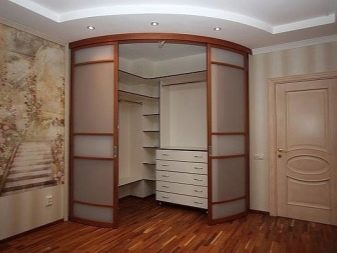

- Round the corner cabinet has a radius structure, its doors are arranged in a semicircle. Spotlights are often mounted in the upper part of the products. The complete set of such a model can be modest and combine a couple of compartments for clothes and hats, or it can be quite spacious and even act as a mini-dressing room. Rounded structures look more dimensional than semicircular ones.
- Products can be trapezoidal... Often it is these models that are used as dressing rooms. Additional corners create space inside the product. Oversized models can be endowed with a fairly large number of compartments that can accommodate a lot of things. There is also such a shape of the cabinet as an asymmetric trapezoid, it has a larger size.


- Triangular wardrobes look very compact in the corner of the room. Cabinet models are small in size and are usually used in office spaces and small hallways. Diagonal models, triangular in cross-section, look particularly compact and are well suited for filling the space between doors and windows on adjacent walls.
- Five-walled products are often part of modular designs. They are easy to combine with dressers, sideboards and tables. The side compartments of the models have an open front and are supplied with shelves.
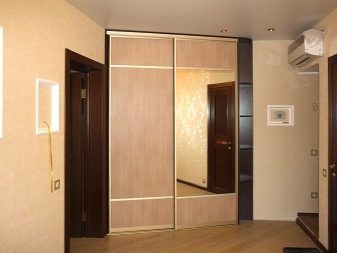

Types of facades
Like other models of wardrobes, corner structures imply different designs and facade designs.
Closed front types are shelves or other compartments that are covered with doors. Open fronts look like a row of shelves with free access to their contents.
In corner cabinets, there are either completely closed facades or a combination of closed and open parts.


The glass façade for the corner wardrobe is a fashionable trend. The glass is mostly matte and can be made in different colors. This technique is very unusual, because through the frosted glass the outlines of the contents of the cabinet are piquantly visible. Sometimes inserts with glass are embedded in textures from other materials.
Often, cabinet fronts are decorated with prints and drawings. Also, glass surfaces or other textures are supplied with patterns.


How to choose?
To choose the right corner wardrobe, you must, first of all, remember about its purpose and the functions that it must perform in a particular room.
- For children, a wardrobe should be selected depending on the age of the child. The smallest need to include a toy box in the design. For a student, you can equip a special corner by combining a wardrobe with a table and using the convenient open front shelves to store school supplies. A wardrobe "slide" with a small dressing table and a mirror is suitable for a girl. Shelving corner structures are made for a teenage room.


- There are wardrobes and roomy wardrobes for storing things. In closets for such purposes, there must be sections for shoes, outerwear, underwear and accessories.
Stylish models at affordable prices can be found among the products of Belarusian companies.

- A straight or corner cabinet for storing documents and papers should be compact and roomy at the same time. Modern offices welcome additional bays for archives and folders.
- Beautiful and unusual cabinets often come to the furniture market from Italy. Italian corner pieces are more expensive, but they will fit much better with many interior styles.
The most beautiful wardrobes are elite designer models that will make any room original.
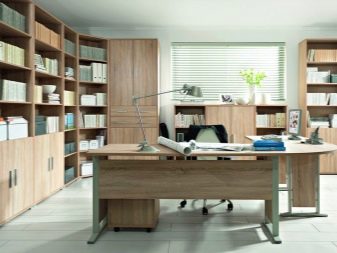

Dimensions (edit)
For each type of corner products, there are standard parameters:
- Wardrobes are large in size, their height reaches 2 m 40 cm, depth and width are 1 m 10 cm.
- A low and small kitchen cabinet can have a length of 60 to 63 cm.The facade is usually not very large - from 29 to 38 cm.For a low modular design with two facades, the minimum dimensions are 60 x 27 x 26.5 cm.
- Triangular structures can have sides up to 150 cm, but sometimes there are mini-models, the depth of which is only 40 cm.

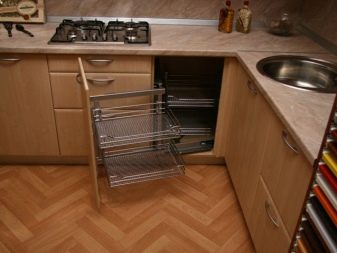
- A trapezoidal cabinet usually has narrow side walls of about 30-40 cm, but such structures are often quite tall.
- The height of the radius product may not be very high. It sometimes reaches only 1 m 80 cm.
- Long structures sometimes reach 2.5 m in height, the length of their compartments is on average 1 m 60 cm and 2 m 10 cm. Sometimes the structure is lengthened using an open facade.
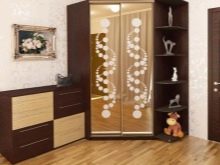
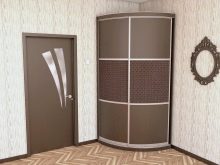

Colors
Among the palette for the design of corner wardrobes, you can find the following colors:
- Popular shades of wood: wenge, milk oak, beech, walnut, cherry. Bleached material is sometimes used to achieve a vintage effect.
- Synthetic materials are embodied in a richer range of colors. Black is combined with many tones, blue is used to create an accent on the doors, a light wardrobe can be decorated with lilac inserts. There are acid tones and even gradient technology.


Materials (edit)
There are a number of basic materials from which corner structures are most often created:
- Presentable and expensive models are made from solid natural wood. Oak, alder, beech are used as raw materials. Pine models are cheaper.
- Popular are materials that include a wood component - MDF and chipboard. They are more budgetary, but offer no less variety of models.


- Some cabinet shelves are made of plasterboard. The cladding of products is made of lining or PVC film.
- Rattan is sometimes used to decorate cabinet doors; such models turn out to be interesting and unusual.
- Furniture hinges for corner structures are made of metal.

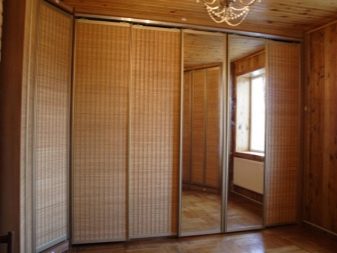
Design
Not all designs have a standard look. Some have special parts that serve important functions.
- To prevent the doors and drawers of the filing cabinet from opening, it is advisable to hang a lock for the filing cabinet. It can be made of plastic and put on handles or metal with a special key.
- If you decide to put the cabinet along a curved wall or at the junction of walls with an uneven surface, choose built-in structures and decorate them from the inside so that a bar is located on the uneven area; it is better to place shelves along flat surfaces.
- To completely eliminate unevenness, you can draw an optical drawing on the wall, which will be inside the cabinet. It will finally smooth the surface visually. Or you can glue the wallpaper with the same effect.
- The size of the compartments can be changed by disassembling the horizontal shelves and thereby increasing the compartments.
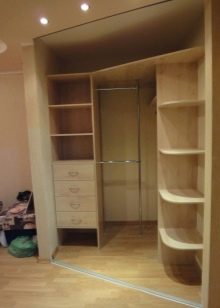


Design ideas
In each direction of the interior, the corner wardrobe should have specific features.
- In the classic style, cabinets made of natural wood of noble shades are used. They are decorated with carving and gilding. The classics approves of models with small legs.
- Provence wood products with modest designs and pastel colors may have small floral prints on the facades.
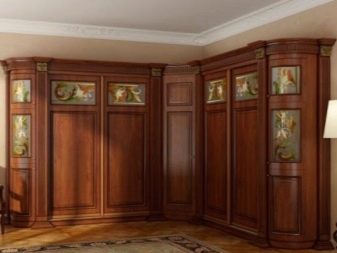

- Corner wardrobe country - handcrafted antique product made of dark or light wood.
- For modern styles of modern, minimalism, high-tech, models made of plastic or artificial materials with backlighting are popular. For decoration, both restrained and bright colors, drawings and even photo printing are used.


Examples of placement in the interior
The corner wardrobe is placed in different rooms, and for each of them, designs of appropriate shapes and sizes are selected.
- In a one-room apartment or in a small room, single-leaf wardrobes are used. They are intended for storing outerwear and hats.
- In offices you can find diagonal structures with horizontal shelves, which are used to store documents and office supplies. These cabinets are usually located near doors or windows.


- In the bedroom a wardrobe is often located, because it is in this room that it is customary to store most of the clothes.
- Into the hall modular designs are chosen with special shelves for books and a compartment for a TV. The corner piece is either a pentagonal or a concave diagonal structure. The cabinets in the living room have more open-fronted shelves than similar products in other rooms.
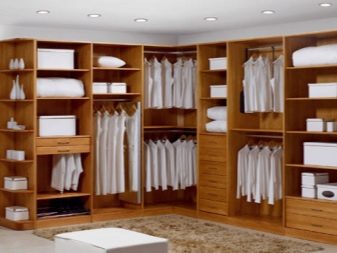

Wardrobes with two or more doors are often installed in the bedroom. These can be L-shaped or radial structures. Very often, cabinets with mirrored doors are installed in a room; among the overall products, there may be convex-concave models that look very original.
The corner cabinet-partition has a rectangular or pentagonal shape. The location of such products is determined by the zonal division of the room. Typically, this layout is used in spacious rooms.


Corner wardrobe is an important detail in any home. If you take into account all the features when choosing a model, each room of your home will acquire a beautiful and elegant look.
For an overview of an interesting corner cabinet, see the next video.













The comment was sent successfully.